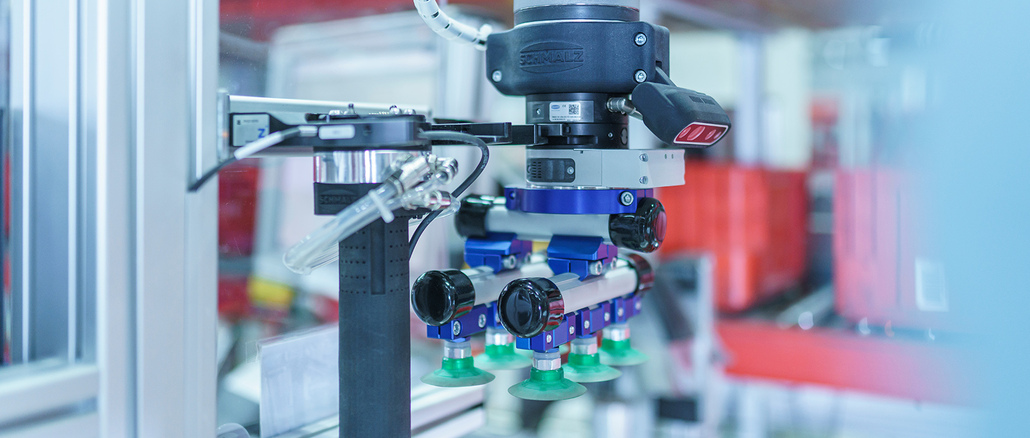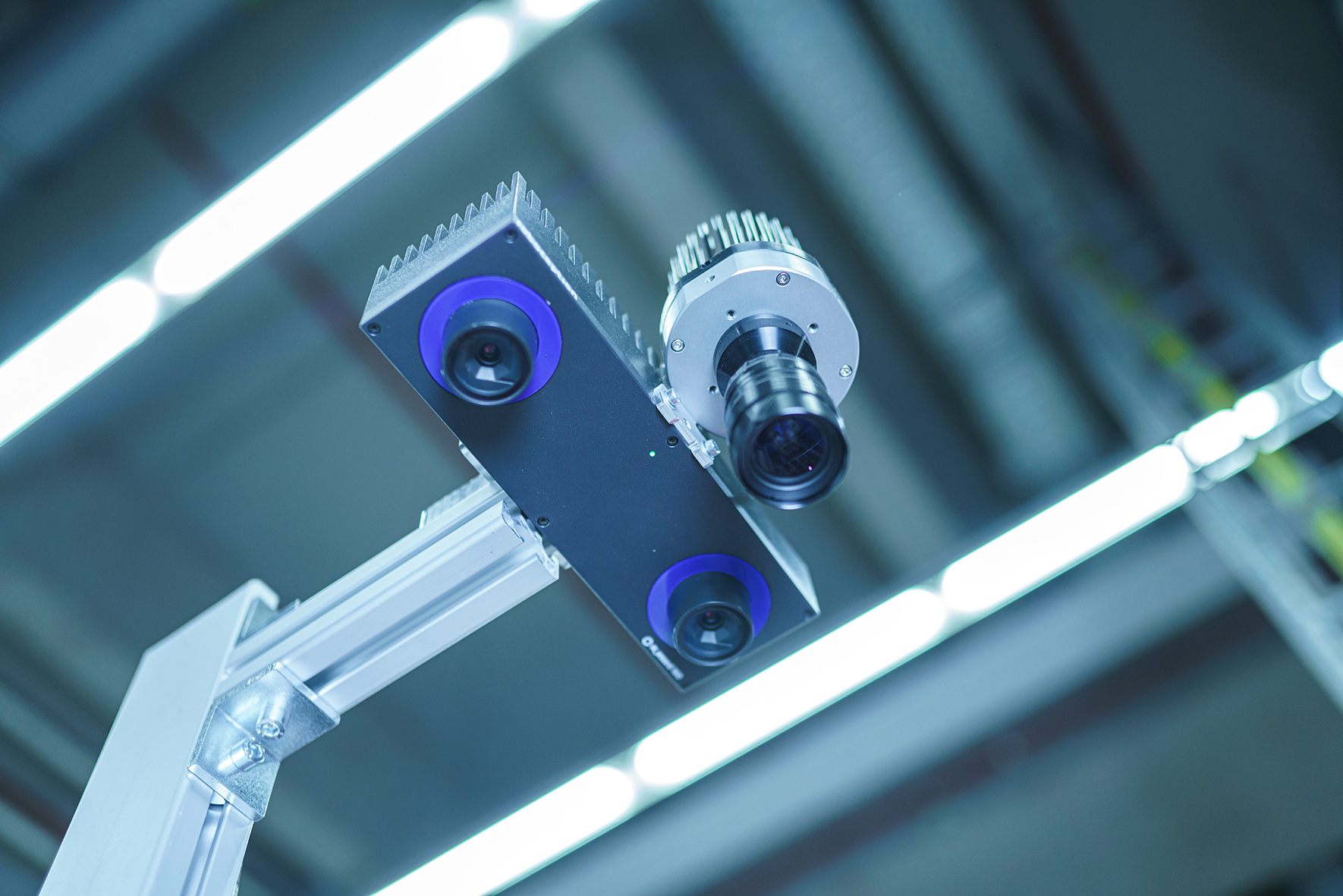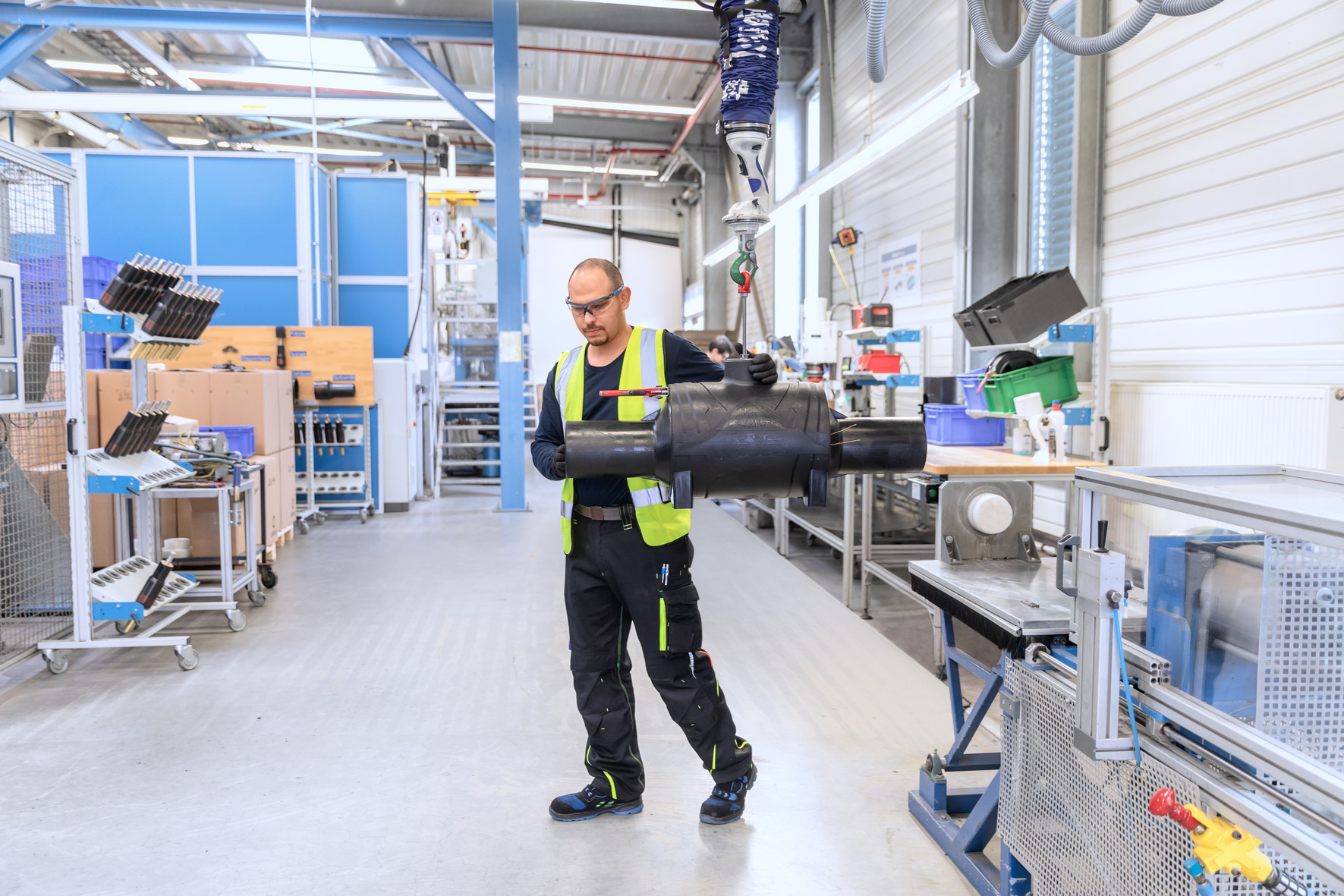
Every day, 60 hands sort around 3,000 boxes of screws, nuts and other fasteners at Würth’s VZ West sales center. A few months ago, a collaborative robot joined the team and now takes over some of the work and significantly improves the ergonomics of the workplace. Schmalz taught the cobot to see, grasp and sort.

© Schmalz
When Würth opened the VZ West sales center at the Künzelsau-Gaisbach site in May 2013, Norbert Heckmann, Chairman of the Management Board of Adolf Würth GmbH & Co. KG, promised, among other things, that employees would benefit from the innovations of the new building. He said, “It will make your day-to-day business even easier.” To achieve this, Würth integrated modern technology and designed the workstations ergonomically. However, the goal of also dealing sustainably with the resource of manpower was not yet considered complete: Even today, the specialist for assembly and fastening technology checks whether tasks are too monotonous or physically demanding – as in the incoming goods department of the distribution center.
Here, 30 people work in two shifts per day and move approximately 3,000 cartons. They stack the 500 to 5,000 gram cuboid cartons full of screws, nuts, washers or steel construction elements from pallets into small load carriers (KLT). “The total load of an employee thus amounts to several tons spread over the shift. The monotony of the job is just as stressful,” clarifies Roland Schneider, Head of the Technical Department at Adolf Würth GmbH & Co. KG.
Until now, consistent rotation after four hours was the best way to counteract ergonomics and monotony in manual unwinds. Würth will increase the degree of automation in logistics in order to ease the burden on employees, cover further growth and counteract the increasing shortage of skilled workers.
Light grab, smart eyes

© Schmalz
J. Schmalz GmbH took on the task of intelligently automating the existing manual handling process. “Transferring cartons of different sizes and weights is the ideal task for our BinPicking gripper SBPG,” explains Matthias Frey, Business Development Robotics. The SBPG is long enough to dip into the crates and light enough not to reduce the payload of smaller robots too much. Thus, a space-saving cobot from Universal Robots can guide the gripper, while the Vision Eco-System for Schmalz VE4S takes care of vision. By using standard components from its Robotics and Vision division, Schmalz provides Würth with an economical solution for less than 100,000 euros that can be implemented quickly thanks to plug-and-play systems – without any major engineering effort.
The concept was quickly in place, although two details particularly challenged Schmalz’s technological know-how: firstly, picking from the pallet and tightly placing the packages in the crates despite a high degree of variance, and secondly, recognizing an intermediate layer with an unknown imprint. An additional complicating factor here is that the design of the layer pads can resemble that of the boxes. “The only approach that worked here in a process-safe manner was the use of artificial intelligence,” Frey explains. Schmalz implemented the defined set pattern with workpiece-specific programming: “We started with a limited parts spectrum that utilizes the first cell to 100 percent capacity. Now we are working on optimizing the picking performance of the subsequent cells and expanding the parts spectrum to be able to store additional items automatically.”
In contrast, the challenges posed by the confined space at the job site and the additional task of retrieving the empty containers from a crate conveyor were relatively easy to meet. This is because a laser scanner eliminates the need for a security fence and thus ensures a lean cell. As soon as a person approaches, the collaborative robot reduces its speed and continues to work safely with reduced forces.
One system, three grippers

© Schmalz
To perform the various gripping tasks, the Cobot can independently swap the suction cups of the BinPicking gripper SBPG and – thanks to the Match quick-change module – the entire gripper. “One load receptor is always on the robot arm while the other waits in the gripper station. If, for example, a crate needs to be moved, the cobot fetches the PXT gripper designed for this purpose. Thanks to the standardized connection and communication, this is immediately ready for use,” explains Frey. Three suction cups, the SAOF oval, the SPB1 60 and the SPB1 80, are available to the SBPG, enabling the robot to handle any carton size safely. The required vacuum is provided by the RECB pneumatic vacuum generator. Its integrated SEP nozzle ensures efficient and at the same time energy-saving operation.
Schmalz implemented software whose user interface allows employees to enter the current order. This communicates with the camera, the cobot and the safety laser scanner and adjusts the robot controller and camera to the task after input.
“Currently, we cover around 30 percent of the extremely extensive range of goods – and the trend is rising,” explains Frey in April 2022. The special feature is that Würth controls the entire order management of the robotic cell via the software. What is already working at 100 percent are features such as the target container check, where the camera checks whether the KLT provided is really empty, the detection and removal of the layer pads from the source box, and the collision check. The software calculates the waypoints that the robot approaches and uses the digital twin to check whether there are any collisions. If this is the case, it bypasses the obstacles and sets new waypoints.
Praise for the Cobot solution
The collaborative robot has been in operation at the VZ West distribution center since the end of December 2021. “What I hear from our staff in the incoming goods department is consistently positive – they are thrilled,” reports Roland Schneider, who immediately afterwards provides an insight into the day-to-day work with the Cobot: The employees use the lift truck to move a Euro pallet with boxes into the designated area. The boxes are between 100 and 250 millimeters long, 90 to 100 millimeters high and 90 millimeters wide. The robot fetches the KLT target container itself from a conveyor belt. The robot cell fills as many KLT containers until the Euro pallet is emptied. When the totes are pushed onto the conveyor system, they are scanned and booked in the SAP system.
The solution at Würth shows how a collaborative robot in combination with a camera system and the right programming can effectively relieve employees. “The Cobot reduces monotonous work, significantly improves ergonomics and is therefore a valuable support. Now it’s a matter of gradually familiarizing him with our entire product range so that he can ease the personnel bottleneck somewhat,” emphasizes Schneider, who would like to implement further projects with Schmalz and “the great team of experts around Mr. Frey”.
Web:
www.schmalz.com



